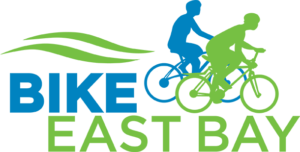 Photo: City of Oakland
Photo: City of Oakland
Last week the family of Deontae Bush, along with Oakland community leaders and city staff, cut the ribbon on upgrades to 35th Avenue. After a number of serious injuries and fatalities along the street, the city rolled out new speed cushions and visibility measures for pedestrians along 35th Avenue. We honor the advocacy work of Deontae Bush’s family through the years to make these upgrades happen. The speed cushion designs are a new innovation not made before on arterial, or high-traffic, streets. Neighbors living on 35th Avenue are hopeful that these safety measures work to slow traffic.
We are hopeful that these innovations will be made on other streets in need of traffic calming. And we speak to city leaders today to say: there is more work to do.
Sign up for updates on Oakland bikeways today.
In addition to 35th Avenue, we know which streets have the highest rate of serious crashes in Oakland. That knowledge is available when cities are seeking funding for long-term improvements. But funding to improve high-injury corridors, often provided via the federal Highway Safety Improvement Program (HSIP), can take four to six years to be delivered. That’s a four to six year wait from when funding is secured to when crucial upgrades actually arrive on the ground. The HSIP grant funding for upgrades to 35th Ave. was announced in 2016. In the meantime, three people have died in hit-and-run collisions on the street, all of which might have been prevented through more proactive traffic calming measures.
We reiterate our ask made to city leaders two years ago. When it comes to high-injury corridors: proactively install immediate traffic calming measures; and fast-track safety improvement projects to reduce the years-long wait. Quick action is possible. Life-changing upgrades on high-injury streets can’t wait.
Want updates on biking, walking, and transit improvements in Oakland? Sign up for updates on Oakland bikeways today.


